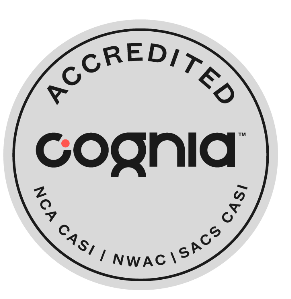Everything to Know Ahead of the Annular Solar Eclipse
Six years ago, the nation looked upward as the skies went dark in the middle of the day for an event now known as the “Great American Eclipse.” The moon completely covered the sun in the middle of the day, causing a total eclipse visible across the entire nation.
We won’t see another total eclipse of the sun until April 2024, and then not again until August of 2044. But in one month, we’re still in for a treat as an annular eclipse darkens the skies Saturday, Oct. 14.
What is an annular eclipse? When, where, and how can you observe it while protecting your eyes?
What is an Annular Solar Eclipse?
According to NASA, an annular solar eclipse is when the moon passes between the Earth and the Sun while the moon is at its farthest point from the Earth. The moon appears smaller than the Sun because of its distance, which is why it will not completely cover the star. Instead, it will create what appears to be a “ring of fire” around the dark circle, which is the moon.
The eclipse will happen in stages as the Earth rotates. First, there will be a “partial eclipse” as the moon slowly moves across the Sun, blocking more and more of the light. As it does, the Sun will appear to begin to take the shape of the letter “C.”This phase is also known as first contact.
Next comes “annularity.” About an hour and 20 minutes after the partial eclipse begins,the moon will be completely in front of the Sun, causing the “ring of fire” phenomenon. This is known as second contact, or annularity and will last between one and five minutes. The sky will grow a bit darker, though not as dark as a total eclipse, and the air may even feel cooler like when you step into the shade of a tree.
After a few minutes, the Moon will continue passing over the sun making a return to a “partial eclipse,” or third contact.
Finally, the partial eclipse will end and the Moon will move past the Sun, no longer blocking the light. This is fourth contact.
How to Safely Watch the Eclipse
It is never safe to look directly at the Sun, because its bright rays can be harmful to our eyes. In order to watch an eclipse, you’ll need special eye protection specifically designed for looking at an eclipse. You can also make a pinhole projector so you can view the eclipse without looking directly at the Sun. NASA has great resources for safe watching on their website.
The Clark Planetarium has donated special eclipse glasses to sixth grade teachers across the Canyons School District to be used during the event.
It’s also good to remember not to look at the Sun through binoculars, a telescope or a camera lens without a specially designed solar filter. Do not look through any of those even if you’re wearing special eclipse glasses because they can make eye injuries worse.
If you’re making your own indirect viewer, like a pinhole punched into an index card, always project the image of the Sun onto a nearby surface, never look at the Sun through the hole.
Also remember to wear sunscreen, especially if you plan to watch the entire eclipse over a few hours, you can still get sunburnt as the Sun will be very bright before and after annularity.
When and Where will the Eclipse be Observable?
Next month’s eclipse will cross North, Central, and South America. Here in the United States, the annular solar eclipse will begin in Oregon at 9:13 a.m. PDT and end nearly two thousand miles away in Texas at 12:03 CDT.
What About Here in the Beehive State?
We’re in a prime spot for eclipse viewing, as long as the skies stay clear. The path of the eclipse moves through Oregon, into Nevada, Utah, and Arizona. While the direct path is over Central and Southern Utah, people in Northern Utah will still see 90 to 80 percent of the eclipse.
NASA has worked out that the Partial Eclipse will begin in Richfield UT, about 150 miles south of the Salt Lake Valley, at 9:09 a.m. MDT.
9:09 a.m. – Partial Eclipse Begins in Richfield
10:26 a.m. – Annularity Begins
10:28 a.m. – Maximum Eclipse
10:31 a.m. – Annularity Ends
11:56 a.m. – Partial Eclipse Ends






